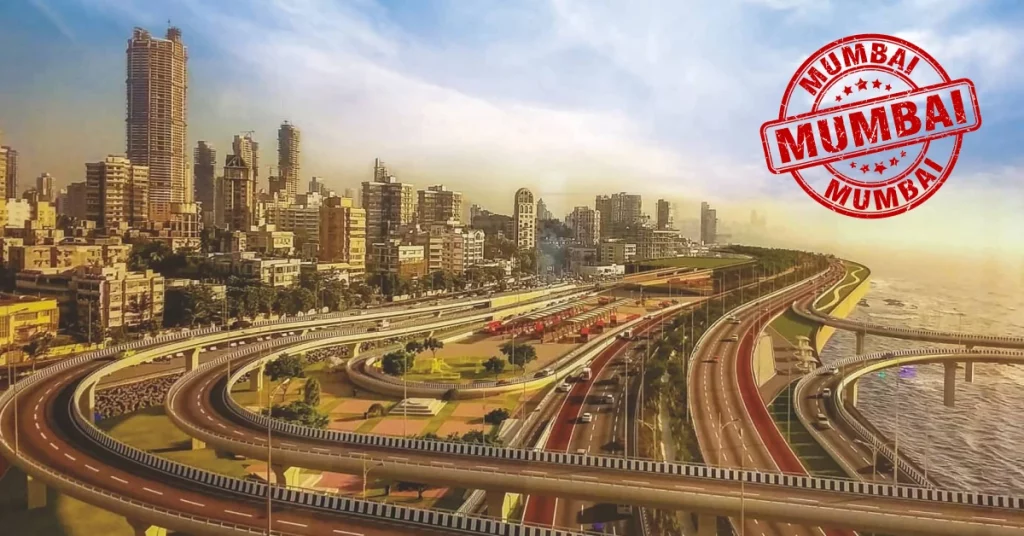Mumbai infrastructure has become a common headline in the current affairs! India’s financial hub, Mumbai, famously known as “The City that never sleeps,” is all set for a remarkable transformation in its infrastructure.
As the country’s highest tax-paying city, Mumbai faces critical challenges with crumbling infrastructure, manifested through traffic jams and overcrowded local transportation.

Recognizing the urgency, the Indian government has unveiled ambitious plans for a comprehensive upgrade, encompassing road, rail, and airport projects over the next five years.
This write-up delves into the details of Mumbai infrastructure, citing how the city is gearing up for a significant and much-anticipated transformation.
(A) Mumbai Metro
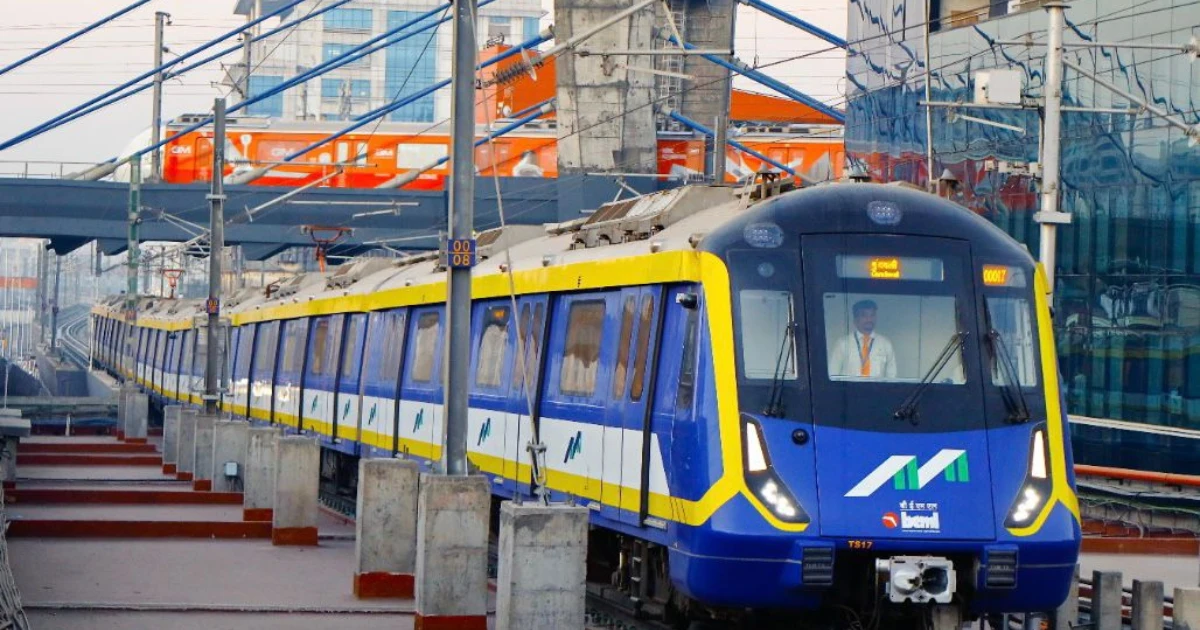
The Mumbai Metro project is a strategic initiative aimed at alleviating traffic congestion and enhancing the efficiency of the overcrowded railway network in the city.
(A.1) Project Overview
The Mumbai Metro comprises 14 lines, covering an extensive total distance of 350 kilometres. This ambitious project is designed to provide a comprehensive solution to the city’s transportation challenges.
Here is the list of lines that will be upgraded–
| S.No. | Stations | Distance |
| 2A | Dahisar-Charkop-Andheri West | 18.5 km |
| 2B | Andheri West- Mandala | 23.6 km |
| 3 | Colaba-Bandra-SEEPZ | 33.5 km |
| 4 | Wadala-Ghatkopar-Mulund- Teen Hath Naka- Kasarvadavali | 32.32 km |
| 4A | Kasarvadavali- Gaimukh | 2.7 km |
| 5 | Thane- Bhiwandi- Kalyan | 24.9 km |
| 6 | Lokhandwala- Jogeshwari- Kanjumarg | 14.5 km |
| 7 | Dahisar- Bandra | 16.5 km |
| 7A | Andheri- CSMIA | 3.17 km |
| 8 | CSMIA T2: NMIA | 35 km |
| 9 | Dahisar East- Mira Bhayander | 10.3 km |
| 10 | Gaimukh- Shivaji Chowk | 9.2 km |
| 11 | Wadala- CSMT | 12.7 km |
| 12 | Kalyan- Dombivli- Taloja | 20.7 km |
(A.2) Operational Timeline
Several metro lines are scheduled to commence operations in 2024, with the majority becoming operational by the year 2025. This phased approach ensures a systematic and timely expansion of the metro network.
(A.3) Aqua Line 3 Details
A significant highlight is the 33.5-KM Aqua Line 3, which operates entirely underground. This line traverses the Colaba-Bandra-SEEPZ corridor, connecting vital financial hubs like Nariman Point, Bandra-Kurla-Complex, Fort, Worli, Lower Parel, and Goregaon. The anticipated completion date for the entire route is 2024, with Phase 1 expected to be operational by April.
(A.4) Implementing Authority
The Mumbai Metro Rail Corporation Ltd (MMRCL) serves as the nodal body overseeing the project. This collaboration between the Government of India and the Government of Maharashtra underscores the collective effort to address the city’s transportation needs.
(A.5) Financial Overview
The project is estimated to cost approximately Rs 33,000 crore. Funding for this massive endeavor comes from various sources, with Japan’s technical and lending agency, the Japan International Cooperation Agency (JICA), being a notable contributor.
(A.6) Commuter Benefits
MMRCL predicts that the metro line will cater to more than 16 lakh commuters daily. This substantial increase in public transportation capacity is expected to significantly reduce travel times in a city grappling with heavy congestion.
(A.7) North-South Metro Corridor Features
Upon completion, the fully underground North-South metro corridor will boast 27 stations and interchange points. This interconnected network will seamlessly link with the city’s famous suburban railway, Monorail, and the ‘Versova-Andheri-Ghatkopar’ Metro-1, facilitating smooth travel from East to West within the city.
Thus, the Mumbai Metro project represents a comprehensive and well-planned effort to enhance the city’s public transportation infrastructure, ultimately contributing to a more efficient and accessible urban environment.
(B) Navi-Mumbai International Airport
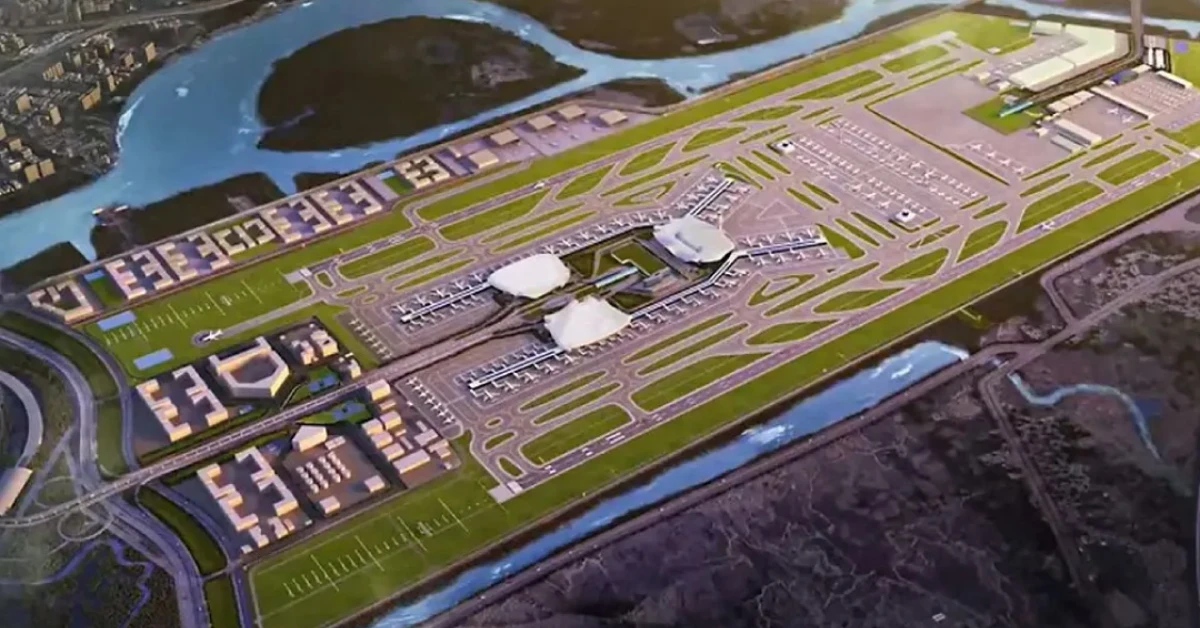
The Navi Mumbai International Airport is an upcoming project aimed at addressing the growing need for increased airport capacity in the Mumbai Metropolitan Region. Operated by Adani Airports Holdings Ltd, the greenfield airport is expected to bring significant relief to the issue of congestion in Mumbai’s existing airports.
(B.1) Phase 1 Development
Under Phase 1 of its development, the Navi Mumbai International Airport is projected to handle 20 million passengers annually. This phase is set to be completed by the end of 2024, offering a timely solution to the pressing airport capacity challenges in the region.
(B.2) Cost and Financial Implications
The airport is being constructed at a cost of Rs. 16,700 crore, presenting a substantial investment in addressing Mumbai’s airport congestion issues. This development becomes crucial as there is no available funding for expanding existing airports in the city.
(B.3) Operational Impact
With an online launch expected by December 2024, the Navi Mumbai International Airport is poised to alleviate a major bottleneck in airport capacity for Mumbai. This development is anticipated to have a transformative effect on Navi Mumbai, influencing the region positively.
(B.4) Adani Enterprises and Airport Operations
Adani Enterprises manages the airport operations through Adani Airport Holdings, which holds the mandate to operate various airports, including Ahmedabad, Lucknow, Mangaluru, Jaipur, Guwahati, Thiruvananthapuram, Mumbai, and the greenfield Navi Mumbai International Airport.
Note: Do you want to know more about Adani’s success story? If yes, then go through the article “Adani Case Study: Rise of India’s Powerhouse Conglomerate.”
(B.5) Phased Development and Total Capacity
The Navi Mumbai International Airport project is being developed in multiple phases. Upon completion, it is expected to have a total capacity of 60 million passengers per annum and a cargo handling capacity of 800,000 tons per annum. The comprehensive development is estimated to cost about Rs. 17,000 crore.
In short, the Navi Mumbai International Airport emerges as a crucial solution to Mumbai’s airport congestion challenges, with a phased development approach, significant investment, and the promise of transformative impact on Navi Mumbai’s landscape.
(C) Mumbai Trans Harbour Sea Link-Atal Setu Marg
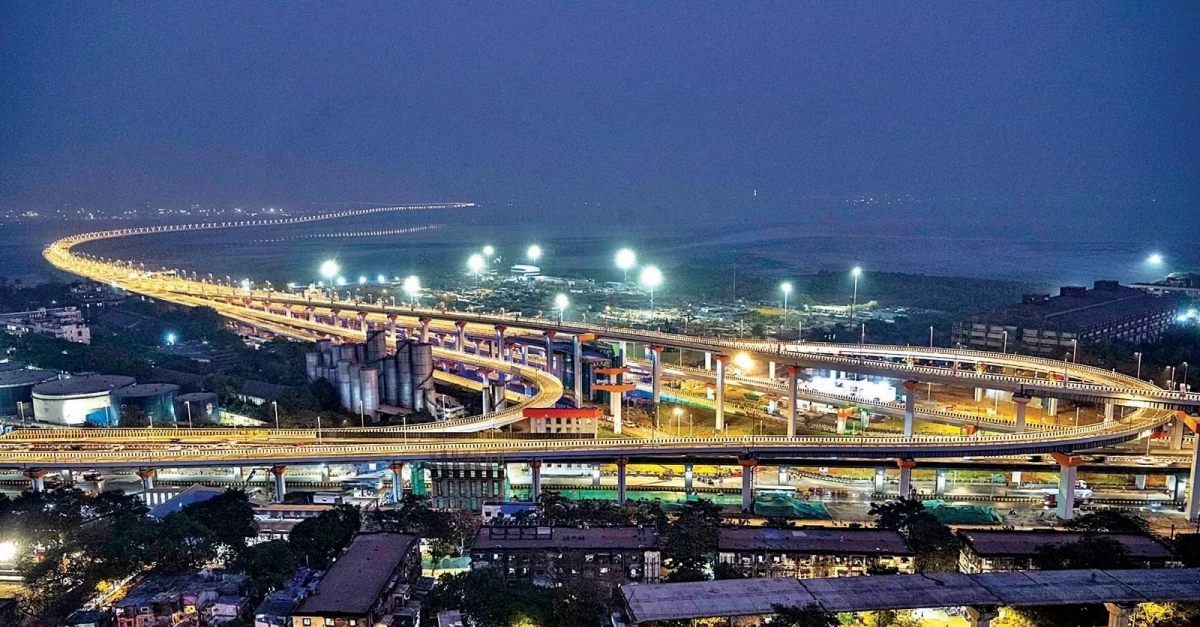
This is going to be another remarkable upgrade of the Mumbai infrastructure. The Mumbai Trans Harbour Sea Link, known as Atal Setu Marg, is a remarkable engineering project set to become India’s longest sea bridge, connecting Mumbai city to Navi Mumbai. This 22 km-long megastructure is expected to enhance connectivity and spur economic development in the region.
(C.1) Key Features and Inauguration
This engineering marvel spans 21.8 km, making it the longest sea bridge in India. Scheduled for inauguration on January 12th, the project will be officially opened by Prime Minister Narendra Modi, marking a significant milestone in the development of Mumbai’s infrastructure.
(C.2) Route and Connectivity
The six-lane Mumbai Trans Harbour Sea Link will start from Sewri in South Mumbai, traverse Thane Creek north of Elephanta Island, and conclude at Chirle village near Nhava Sheva. This strategic route provides direct connectivity to the Nhava sea port, the Mumbai – Pune Expressway, and the Mumbai – Goa Highway.
(C.3) Implementation and Project Cost
Executed by the Mumbai Metropolitan Region Development Authority (MMRDA), the project is categorized as a Regional Development Project. The ambitious undertaking comes with an estimated cost of about Rs. 18,000 crore, highlighting the scale of investment in the region’s infrastructure.
(C.4) Economic Benefits
The Mumbai Trans Harbour Sea Link is poised to bring about significant economic development, not only to Navi Mumbai but also to parts of Raigad District. The six-lane bridge is a crucial component in fostering faster connectivity, particularly with the upcoming Navi Mumbai International Airport.
(C.5) Historical Significance
After over a decade of planning, the realization of this horizontal link has gained momentum in recent years. The inauguration by Prime Minister Narendra Modi signifies the fulfillment of a long-awaited vision to improve connectivity between Mumbai and Navi Mumbai.
(C.6) Regional Impact
Once fully operational, the sea bridge is expected to act as a catalyst for enhanced connectivity and economic development in the entire Mumbai Metropolitan Region. This project is set to play a pivotal role in shaping the future growth and accessibility of the region.
(D) Mumbai Coastal Road
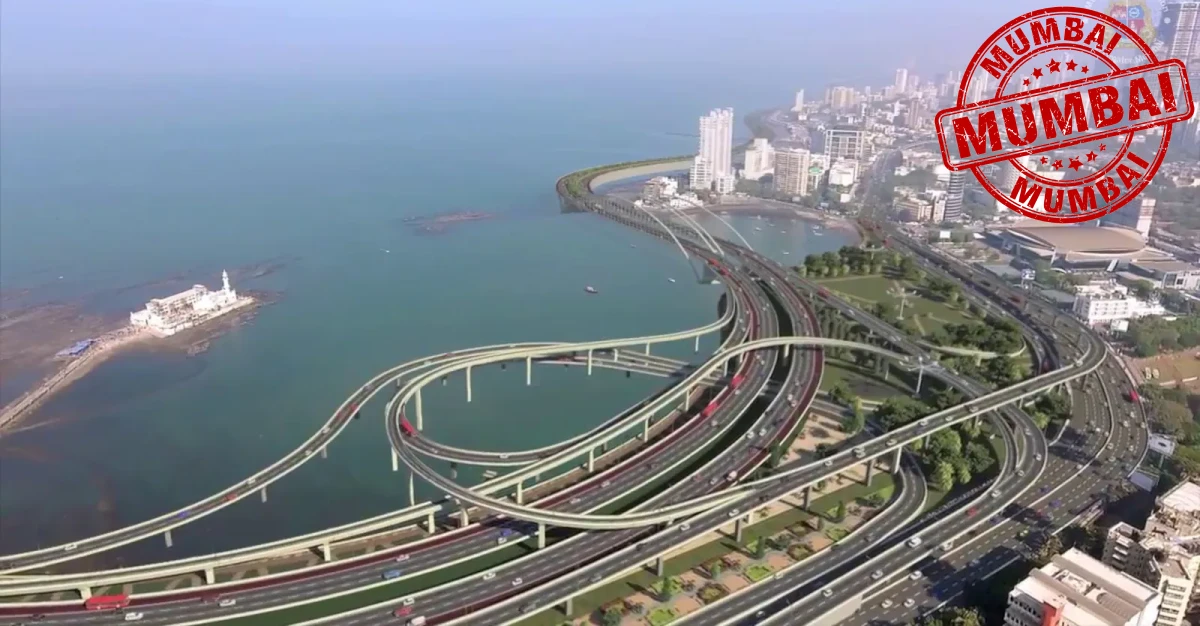
The Mumbai Coastal Road is an upcoming 22-km long freeway connecting Marine Lines in the South to Kandivli in the North, set to transform travel in the city. This significant infrastructure project comes with an estimated cost of 12,000 crores and is expected to reduce the current 2-hour commute from western suburbs to South Mumbai to just 40 minutes.
(D.1) Mumbai Infrastructure Coastal Road Project Objectives
Envisioned by the Brihanmumbai Municipal Corporation (BMC), the Mumbai Coastal Road Project aims to decongest existing roads by providing an alternate North-South Trunk route. The project aligns with the goal of improving overall connectivity in the city.
(D.2) Complementary Projects
The Mumbai Coastal Road complements the 33.5km underground Aqua Line 3 of the Mumbai Metro. This metro line, connecting Cuffe Parade to Aarey, will enhance mobility between North and South Mumbai, creating a comprehensive network to address the city’s transportation needs.
(D.3) Phase 1 Overview
The initial phase of the Mumbai Coastal Road Project spans 9.98 km, stretching from Princess Street Flyover at Marine Lines to the Worli end of the Bandra-Worli Sea Link. This section involves seafront development, marking a unique initiative in India. Phase 1 is anticipated to be completed in the first half of 2024, with a project cost estimated at about Rs.13,000 crore.
(D.4) Engineering Challenges
The coastal road project encompasses intricate engineering work, including land reclamation, construction of tunnels, bridges, flyovers, and interchanges. Tackling these challenges demonstrates the project’s commitment to creating a robust and efficient transportation network.
(D.5) Time Saving Impact
Upon completion, the Mumbai Coastal Road is set to significantly reduce travel time, offering a faster and more efficient route for commuters. This transformation is expected to enhance the daily lives of residents, facilitating quicker movement between different parts of the city.
That’s how, the Mumbai Coastal Road emerges as a crucial infrastructure project, not only addressing current congestion issues but also contributing to the overall improvement of Mumbai’s connectivity and transportation network.
(E) Mumbai Locals: A Significant Part of Mumbai Infrastructure Modernization
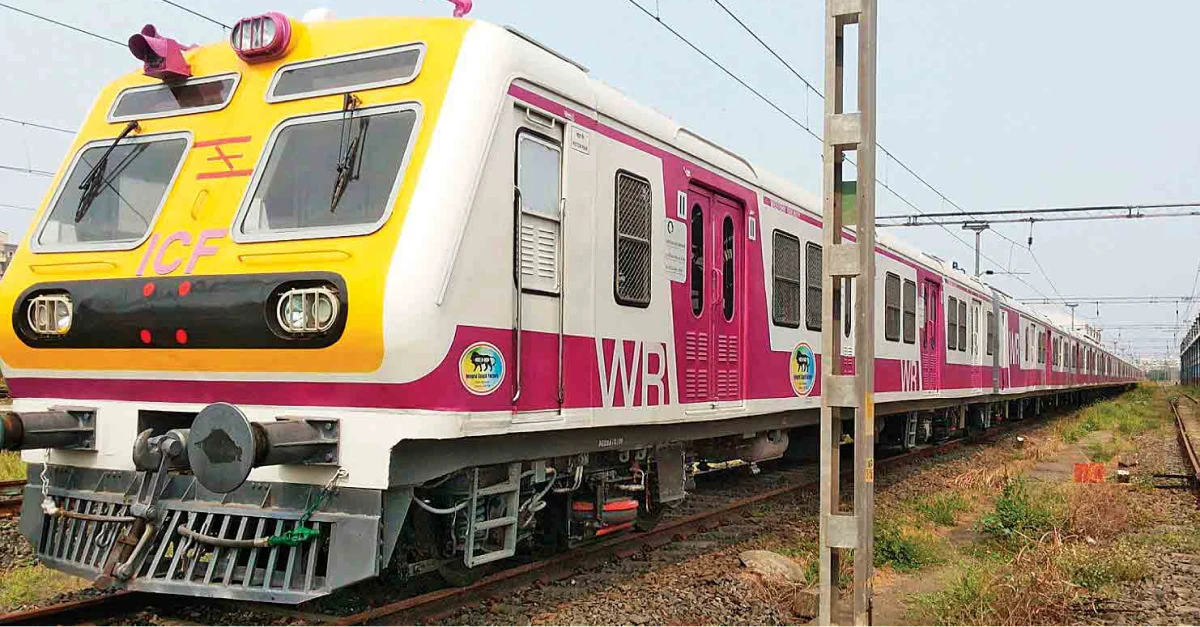
Exciting news for Mumbai locals – plans are underway to upgrade them into Vande Metro locals with air conditioning (AC) and a nifty lock-the-doors feature. Let’s dive into the details of this impressive transformation.
(E.1) Phased Plan Proposal
A railway consultant has officially proposed a phased plan to transition Mumbai’s regular local trains into AC ones. This strategic approach spans four phases, unfolding over 18 months to nearly a decade. The aim is to prioritize fast corridors initially and then gradually migrate to slower ones.
(E.2) Mumbai-Modified AC Local Trains
In the pipeline are 238 Mumbai-customized AC local trains, with 47 falling under MUTP-3 and 191 under MUTP-3A, awaiting necessary approvals. These upgraded trains promise exciting features such as inbuilt infotainment, enhanced CCTV systems, and improved acceleration.
(E.3) Systra Consultation for Smooth Transition
To ensure a seamless transition with minimal disruption to commuters, the Mumbai Rail Vikas Corporation (MRVC) has appointed Systra as a consultant. Their task is to develop an efficient migration strategy, considering factors like communication, fare-side debates, and initial introductions on fast corridors.
(E.4) Four Phases of Transition
- Preparation Phase: Involves scheduling, staff training, communication, and trial runs.
- Learning Phase: Initiates new AC train inductions, replacing up to 10% of existing services, identifying issues, and rectifying initial hiccups.
- Build-up Phase: Gradually introduces new AC trains, scaling up to 50% of services in sub-phases of 20%, 35%, and 50%.
- Accelerated Induction Phase: Sees over 50% of services running with AC rakes, expediting the induction of additional new trains.
(E.5) Fast Trains Priority
AC train introduction prioritizes fast lines due to extended runtime margins, fewer station stops, reduced door usage, lighter AC load, and lower reliance on ground staff in case of door failures. This prioritization is set for the third phase, considering that fast services constitute approximately 24% of total services.
(E.6) Implementation Time Frame
Replacing all regular non-AC local trains with AC EMU rakes won’t happen immediately. The phased induction is expected to progress over approximately 18 months from the date of manufacturing these trains, extending over almost a decade. Hence, a mixed operation of non-AC and AC trains during this interim period is a crucial part of the plan.
(F) Upgradation of the iconic Chhatrapati Maharaj Shivaji Terminus(CSMT)
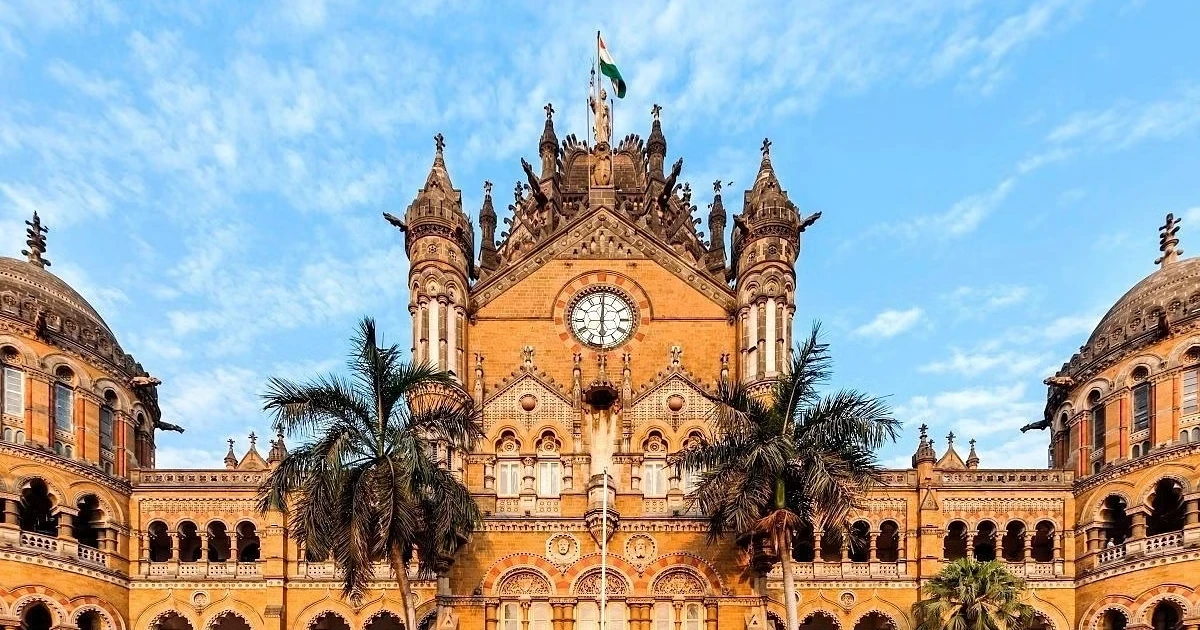
Exciting news for Mumbai Railway Station! The iconic Chhatrapati Shivaji Maharaj Terminus (CSMT) is all set for a transformation. Ahluwalia Contracts has emerged as the lowest bidder among four firms chosen to upgrade this historic railway hub.
(F.1) Winning Bidder: Ahluwalia Contracts
Ahluwalia Contracts secured its place as the lowest bidder in the redevelopment project initiated by India’s Rail Land Development Authority (RLDA). This marks a crucial step in enhancing the infrastructure of CSMT.
(F.2) Project Overview
The project’s primary focus is to revamp CSMT by addressing the piece-meal annex developments made at various times over the last 70 years. The aim is to streamline and modernize the facility, ensuring it meets contemporary standards while retaining its heritage charm.
(F.3) Heritage Building Preservation
Amidst the transformation, there’s a commitment to preserving the gothic-style heritage building of the station. This means that while improvements and updates will take place, the essence and architectural beauty of CSMT’s iconic structure will remain intact.
This endeavor is a testament to the harmonious blend of modernization and preservation, ensuring that CSMT continues to stand as a symbol of Mumbai’s rich history and dynamic future. Mumbaikars are lucky to witness a revamped and revitalized Chhatrapati Shivaji Maharaj Terminus!
(G) City Buses Upgrade: Big Electric Bus Order
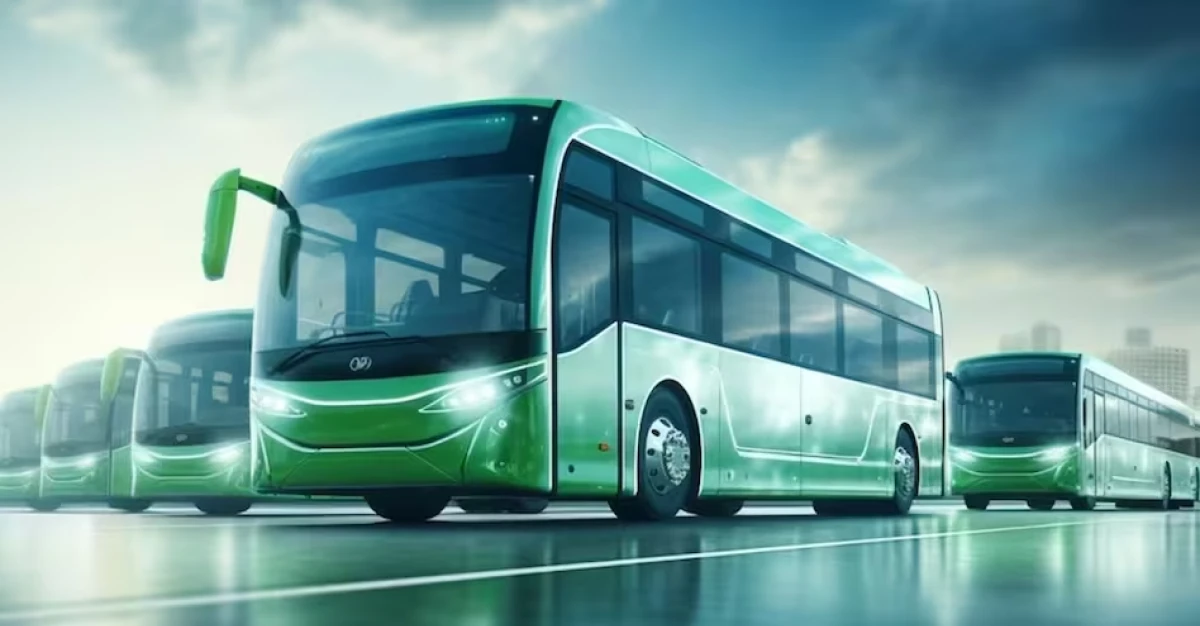
The city’s bus authority is teaming up with Olectra Greentech for a significant upgrade – a big order of electric buses.
(G.1) Order Details
Olectra Greentech, the electric vehicle maker, has landed a substantial order from Vasai-Virar City Municipal Corporation, Mumbai. The order involves supplying and maintaining 40 electric buses, valued at an impressive Rs 62.80 crore.
(G.2) Letter of Award (LOA)
The company confirmed the Letter of Award (LOA) from Vasai Virar City Municipal Corporation, signifying the approval for supplying and maintaining these 40 electric buses.
(G.3) Outright Sale Basis
This bus order, valued at Rs 62.80 crore, follows an outright sale basis. This means that the electric buses are being purchased directly for use by the city.
(G.4) Delivery Timeline
The buses are expected to roll out over a span of seven months, ensuring a gradual and efficient integration of these eco-friendly vehicles into the city’s public transportation system.
Mumbai’s buses are gearing up for a green transformation with these electric additions, marking a positive step towards a more sustainable and environmentally friendly public transport system!
(H) Summing Up the Upgradation of Mumbai Infrastructure
So, in a nutshell, India is really putting in the effort to give Mumbai a major facelift. The city faces some big issues like traffic jams and super-packed local trains, making it tough to get around. But good news is on the way!
The government is all set to fix things with a plan to upgrade roads, trains, and airports in the next five years. Mumbai, being a top taxpayer, definitely deserves these improvements. It’s like a promise for a better and smoother life for everyone in the city.
With these changes, Mumbai is getting ready to shine brighter and make life easier for its people!

